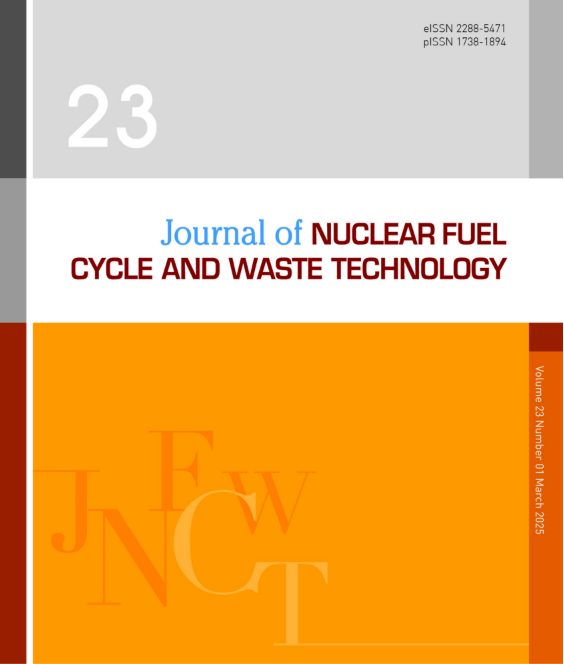- 영문명
- The Comparison on Treatment Method of Liquid Radioactive Waste in Yonggwang #3&4 and #5&6
- 발행기관
- 한국방사성폐기물학회
- 저자명
- 염유선 김승평 이승진
- 간행물 정보
- 『Journal of Nuclear Fuel Cycle and Waste Technology (JNFCWT)』Vol.2 No.3, 219~230쪽, 전체 12쪽
- 주제분류
- 공학 > 공학일반
- 파일형태
- 발행일자
- 2004.09.30
4,240원
구매일시로부터 72시간 이내에 다운로드 가능합니다.
이 학술논문 정보는 (주)교보문고와 각 발행기관 사이에 저작물 이용 계약이 체결된 것으로, 교보문고를 통해 제공되고 있습니다.

국문 초록
Most of the low-level liquid radioactive wastes generated from PWR plants are classified into high or low total suspended solid(HTDS or LTDS), and into radiochemical and radioactive laundry waste. Although the evaporation process has a high decontami- nation ability, it has several problems such as corrosion, foam, and congestion. A new liquid waste disposal process using the ion-exchange demineralizer(IED), instead of the current evaporation process, has been introduced into the Yonggwang NPP #5 and 6 . These two methods have been compared to understand the differences in this study. Aspects compared here were the released radioactivity amount of the liquid radioactive wastes, the dose of off-site residents, the decontamination factor, and the amount of the solid radioactive wastes. The IED system is designed to discharge higher radioactivity about 20% than the evaporating system, and the actual radioactivity released from the evaporating and IED system were 0.473mCi and 1.098mCi, respectively. The radioactivity released from the IED was 2.32 times higher than that of the evaporating system. The dose of off-site residents was 2.97×m㏜ for the evaporating system, and 6.47×m㏜ for IED. The decontamination factor(DF) of the evaporator is, in most cases, far lower than the lower limits of detection(LLD) with the Ge-Li detector. Due to the low concentration of the liquid wastes collected from the liquid waste system, the decontamination factor of IED is very low. Since there is not enough data on the amount of solid radioactive wastes generated by the evaporation system, the comparison on these two systems has been conducted on the basis of the design, and the comparison result was that the evaporating system generated more wastes about 40% than IED.
영문 초록
목차
키워드
해당간행물 수록 논문
- 유도가열식 저온용융로를 이용한 혼합모의 방사성폐기물의 유리화 공정 특성
- 방사성폐기물 유리화 공정 및 유리고화체 특성
- 원자력시설의 사고시 가축의 공기 흡입과 토양 섭취가 육류의 방사능 오염에 미치는 영향
- LiCl-Li2O 용융염계에서의 리튬의 반연속적 전기정련
- 방사성폐기물 유리화플랜트 고온여과시스템의 성능특성
- 영광 3&4와 5&6호기에서 액체 방사성폐기물 처리방법의 비교
- 사용후핵연료 처리를 위한 ACP 핫셀의 정상운영 및 사고시 방사선 환경영향평가
- 사용후핵연료 차세대관리 공정장치 유지보수용 천정이동 서보 매니퓰레이터 와이어 구동부 동작특성
참고문헌
관련논문
공학 > 공학일반분야 BEST
- 리튬이온배터리화재 대응방안의 실효성 분석을 위한 실규모 화재진압실험
- 구조방정식 모형을 활용한 교과 문해력 함양과 복합양식 텍스트 독서 연구
- 융합교육 문헌 고찰을 통한 유아융합교육과정 제안
공학 > 공학일반분야 NEW
더보기최근 이용한 논문
교보eBook 첫 방문을 환영 합니다!

신규가입 혜택 지급이 완료 되었습니다.
바로 사용 가능한 교보e캐시 1,000원 (유효기간 7일)
지금 바로 교보eBook의 다양한 콘텐츠를 이용해 보세요!



